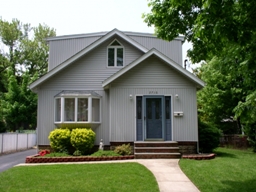What’s Ahead For Mortgage Rates This Week – June 8, 2015
 Last week’s economic news included reports on construction spending, Freddie Mac’s mortgage rates survey and several employment related reports. The details:
Last week’s economic news included reports on construction spending, Freddie Mac’s mortgage rates survey and several employment related reports. The details:
Construction Spending Jumps
The Commerce Department reported that construction spending reached its fastest annual pace since November 2008. Most of the momentum was caused by construction of apartments, commercial projects and roads, and construction of single family homes. Builders spent 2.20 percent more in April than they did in March, which equated to an annual outlay of $1.01 trillion for all types of construction spending. Analysts said that increased spending in construction indicated that the housing sector could see improvement as construction provides more jobs.
Mortgage Rates Mixed
Freddie Mac’s weekly survey of mortgage rates reported that average mortgage rates were mixed last week. Average rates were reported as follows: 30-year fixed rates were unchanged at 3.87 percent with discount points also unchanged at 0.60 percent. The average rate for a 15-year fixed rate mortgage fell from 3.11 percent to 3.08 percent with discount points unchanged at an average of 0.50 percent. The average rate for a 5/1 adjustable rate mortgage rose by six basis points to 2.96 percent with discount points unchanged at 0.50 percent.
Employment Reports Suggest Stronger Labor Market
Several labor-related reports released last week suggest that job markets are gaining strength as they continue to improve. ADP, a private-sector payrolls company, reported 201,000 new jobs in May against April’s reading of 165,000 new jobs. The Labor Department released its Nonfarm Payrolls report for May and reported 280,000 new jobs against expectations of 210,000 new jobs and April’s reading of 221,000 new jobs.
Average hourly wages rose by 0.30 percent and surpassed expectations of a 0.20 percent increase and April’s reading of 0.10 percent. Although incremental, this suggests that labor markets are strengthening to a point where employers are comfortable with increasing wages.
Weekly Jobless claims were reported at 276,000 new claims filed as compared to expectations of 278,000 new claims and the prior week’s reading of 284,000 new jobless claims filed. The national unemployment rate for May ticked up to 5.50 percent from the prior month’s reading of 5.40 percent, but this reading remains below the Federal Reserve’s original benchmark of 6.50 percent for potentially raising the target federal funds rate. The Fed has not moved to change the rate, but analysts expect that this could occur by Fall if economic conditions hold steady.
What’s Ahead
Next week’s scheduled economic reports include job openings, retail sales, consumer sentiment along with the usual weekly reports on mortgage rates and weekly jobless claims.

 Last week’s economic reports included the Case-Shiller Home Price Indexes, FHFA’s House Price Index and Pending Home Sales from the Commerce Department. The details:
Last week’s economic reports included the Case-Shiller Home Price Indexes, FHFA’s House Price Index and Pending Home Sales from the Commerce Department. The details: San Francisco, California where home prices rose 10.30 percent year over year in March, and Denver, Colorado with an even 10 percent gain in year-over-year home prices led the Case-Shiller 20-City Composite Index for March. Rounding out the top-five cities for year-over-year home price growth were Dallas Texas at 9.30 percent, Miami, Florida at 8.70 percent and Tampa, Florida with a year-over-year average gain in home prices at 8.10 percent. San Francisco’s reading for March was the first double-digit increase in home prices since last July.
San Francisco, California where home prices rose 10.30 percent year over year in March, and Denver, Colorado with an even 10 percent gain in year-over-year home prices led the Case-Shiller 20-City Composite Index for March. Rounding out the top-five cities for year-over-year home price growth were Dallas Texas at 9.30 percent, Miami, Florida at 8.70 percent and Tampa, Florida with a year-over-year average gain in home prices at 8.10 percent. San Francisco’s reading for March was the first double-digit increase in home prices since last July.